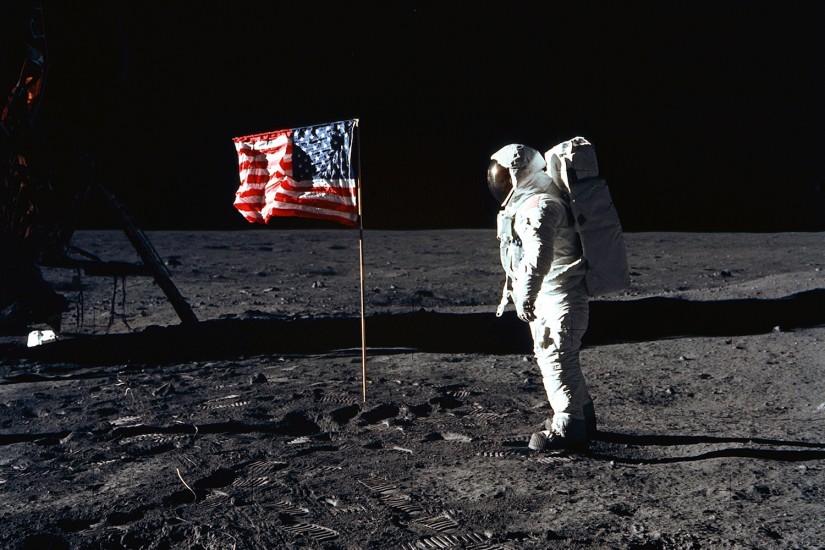NASA’s second lunar mission, Apollo 12, launched on November 14, 1969. This time, Richard F. Gordon manned the capsule while Charles “Pete” Conrad and Alan L. Bean brought the first color TV camera to the surface of the moon. The pair also recovered parts of the unmanned Surveyor 3 probe, which was sent to the moon in 1967.
“Turned out, Neil Armstrong was still up and sitting near one of the observation windows. I believe my father said ‘That was a hell of a ride, wasn’t it?’ and Armstrong replied ‘Sure was!’”
Porter’s father was also a part of the Apollo 12 recovery when the capsule splashed down near Pago Pago, Samoa, on Thursday, November 24, 1969, three days before Thanksgiving that year.
Among his father’s memorabilia are the post-recovery Hornet-Apollo 12 Thanksgiving menu and the moment-by-moment military plan for the splashdown recovery mission, as well as a lighthearted and typo-filled Navy newsletter that describes in detail the logistics involved in retrieving the moon men and the Apollo 12 command module called the “Yankee Clipper.”
Despite all the sci-fi anxiety around space robots and little green men, NASA scientists were much more concerned about alien life-forms of the microscopic variety, like bacteria or toxic particles that could bring space disease to the humans of Earth. Hence, the returned astronauts had to spend 21 days in quarantine before they could high-five other Americans.
Here’s the text from “The Splashdown Weekly,” dated Nov. 17-24, 1969: “At 0958 24 Nov. 1969, the Apollo 12 Command Module ‘Yankee Clipper’ splashed down in the Pacific Ocean 400 miles south east of Pago Pago and 3.1 miles ahead of the HORNET. Astronauts [Charles] Conrad, Richard Gordon, and Alan Bean had finished their job of flying to the Moon, spending 32 hours on the lunar Surface and returning to the Earth. “For the men of HORNET, their job was about to begin, that of picking up the astronauts and the Apollo command module bouncing around in an environment for which it was not designed.
“Like the well organized evolution it was, each pilot, aircrewman, frogman, line tender, crane operator, journalist, NASA specialist, TV cameraman and commentator and everybody who had a part in the recovery operation went into action. The floatation collar was attached, life rafts were inflated and the whole routine of events were checked off minute by minute as the recovery proceeded on schedule.
